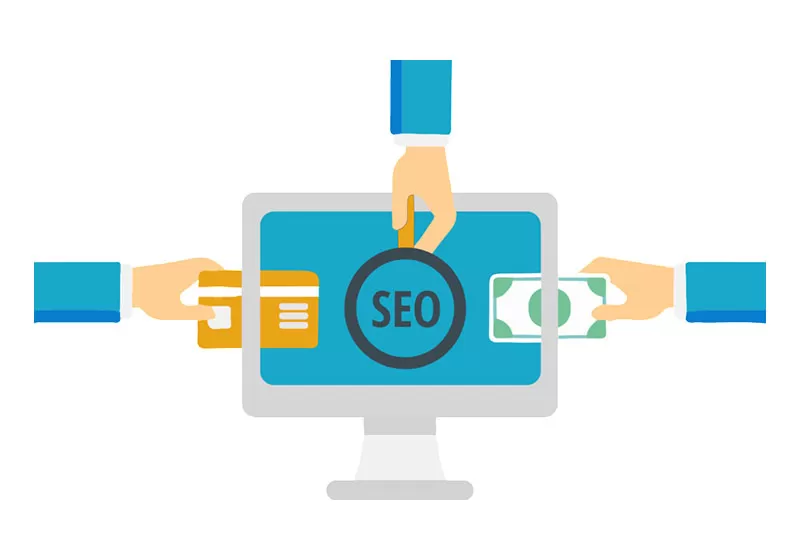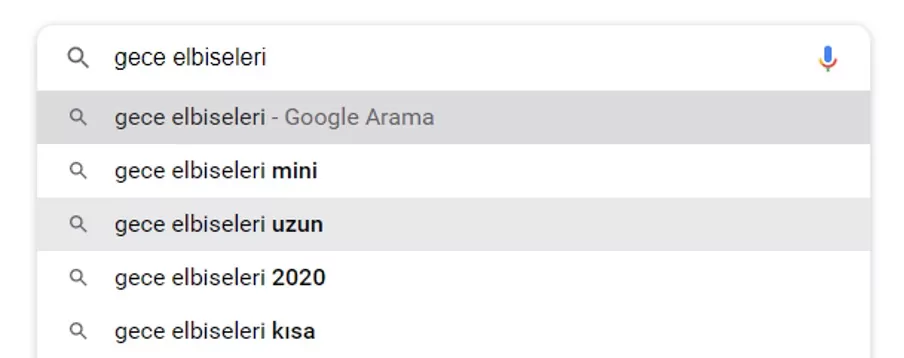E-Commerce SEO
For all e-commerce site owners, being at the top of searches is a top priority. While paid ads can place you at the top of the SERP, it will be very costly for you to stay there for a long time. If you want to rank high permanently, e-commerce SEO can help you achieve this.
By utilizing professional strategies for your e-commerce seo techniques websites that we explain step by step, you can ensure that your website ranks better in search engines and attracts more organic traffic. This can help your e-commerce business grow and succeed. But remember, SEO takes time and requires patience. You need to optimize and update it constantly.
In this eCommerce SEO guide, we’ll tell you everything you need to know about SEO strategy for eCommerce sites and provide tips and strategies to help you optimize your site effectively. These tips are very important for SEO and must be taken into account.
100+ Companies Trust Us for E-Commerce SEO!









What is E-Commerce SEO?

Critical Step in SEO: Keyword Research
Keyword research is an important part of your SEO strategy. Before creating an SEO (Search Engine Optimization) strategy for e-commerce sites, you should find out which search terms your target audience searches using. Because your potential customers’ search terms are actually your keywords. Based on the keywords you have identified, you can start creating useful and fully SEO-friendly content.
In this part of our article, which will guide you, we will explain in detail the many steps involved in keyword research.
What is Keyword Research?
Why is Keyword Research Important?
Doing keyword research on e-commerce seo sites; It is one of the most important e-commerce SEO studies and is a great way to reach your target audience with your SEO compatible content.
Keyword analysis, which is among the important factors among e-commerce seo a product work, is very important. For e-commerce sites SEO work, keyword analysis studies must be done.
How to Do Keyword Research?
You probably have a few keywords that you want to rank high on the search results page. These words can be your products, services or other topics on your e-commerce site. The first step in your e-commerce SEO keyword research is to create a keyword list.
In order to find the words that will lead you to your potential customers, we list the important steps you need to pay attention to the following points
You should analyze your e-commerce site in detail and list what you believe are your important keywords. For an e-commerce website, consider the following:
You should take note of your or your customer’s goals.
You need to identify your target audience.
You should list your main competitors.
Now it’s time to find out what keywords you are looking for. If you are determining keywords for the category and product, you should be careful not to choose words that consist of one word and have very general meanings. Because the volume of competition is very high in such words. It is also very important to use short tail or long tail keywords as much as necessary.
For example; if you are a brand that appeals to the women’s clothing industry, instead of setting words such as “evening dresses” as target words, you should work on word groups such as the following.

- Keep in mind that the higher the search volume for the keyword or keyword group you set for an e-commerce SEO, the more work you usually have to do to achieve high rankings in the SERP.
- You should analyze your e-commerce site in detail and list what you believe are your important keywords.
- You should take note of your or your customer’s goals.
Competitor Analysis in E Commerce Websites
Competitor analysis on the e-commerce website is one of the analyzes that all e-commerce site owners should do. A thorough competitor analysis will help you create a roadmap of what you need to do to make your site as good as your competitors.
When starting e-commerce SEO efforts, it can make your job easier to identify the strengths and weaknesses of both your site and your competitors’ sites. Using e SEO information, you can discover the areas where you are weak on your site, identify the areas where your competitors are weak, and then decide on the right SEO strategy on the e-commerce website.
In concrete terms, doing SEO competitor analysis allows you to
- It can teach you what works and what doesn’t work in your industry.
- Find and exploit the weaknesses of competitors,
- Find competitors’ strengths and replicate them,
- You can decide which SEO work to prioritize.
While analyzing your competitors, do not forget to examine the words, backlink profile and site structure of your competitors in detail. In this way, you can prioritize the SEO work of an e-commerce site that will provide a competitive advantage and achieve faster results.
Competitor analysis is the important step to complete the keyword analysis. Here are the points you need to consider when analyzing competitors:
Words that your competitors are successful with: Analyze which keywords your competitors are ranking high for. By identifying these words, you can shape your own strategy around them.
Your competitors’ links: Examine which sites your competitors are getting backlinks from. By collaborating with these sites, you can strengthen your own backlink profile.
Your competitors’ site structure: By examining your competitors’ site structure, you can understand how they optimize user experience and SEO performance. With this information you can improve the building architecture on your own site.
Words Your Competitors Excel at
Identifying keywords where your competitors are successful is an important part of developing your own e-commerce site’s SEO (Search Engine Optimization) strategy. By targeting these words, you can achieve similar success as your competitors and rank higher in search engines. Here are the steps you need to follow to identify the keywords your competitors are doing well:
Identify your competitors: If you want to get e-commerce seo consultancy, the first step is to identify your competitors, you should identify your most important competitors in your industry. These businesses should be companies that offer similar products or services to you and have something in common with your target audience.
Conduct competitor keyword research: Using tools such as Ahrefs, SEMrush and Ubersuggest, analyze which keywords your competitors are successful for. These tools show you what words your competitors are ranking for in organic traffic and paid search results.

Seize keyword opportunities: Among the keywords that your competitors are successful with, there may be opportunities that you should target. Evaluate these words and determine which words are most relevant for you.
Analyze your competitors’ content strategies: Analyze what type of content your competitors are successful with. This analysis will help you develop your own content strategy. For example, you may see that your competitors have been successful by focusing on certain topics, and you can shape your own strategy by focusing on similar topics.
Target competitor keywords: Try to improve your rankings by starting to target keywords where your competitors are successful. By producing quality and original content related to these words, you can increase your chances of ranking higher in search engines.
Identifying keywords that your competitors are successful with and incorporating them into your own strategy is an effective way to improve e-commerce site search engine performance. In this process, do not neglect to closely follow the trends and opportunities in your industry by conducting competitor analysis and keyword research. Be sure to pay attention to competitor analysis keywords, which has an important place among SEO techniques.
Links of your competitors
Analyzing your competitors’ backlinks will help you develop your own link building strategy. Here are the steps you need to follow for this process:
Study your competitors’ backlink profiles using SEO tools.
- Identify authority sites relevant to your industry and prioritize backlinks from these sites
- Evaluate opportunities among your competitors’ backlinks and decide which sites you should collaborate with.
- Create your own link building strategy, including backlinks from authority sites in your industry and content that will be of interest to your target audience.
- Strengthen your own backlink profile by collaborating with your competitors’ backlinking sites or e-commerce sites.
Your Competitors' Site Structure
For search engine marketing, it is important to analyze your competitors’ site structure and improve your user experience and navigation. When evaluating your competitors’ site structures, pay attention to the following elements:
- Product categories of an e-commerce site: Examine your competitors’ product categories to create a more effective and understandable category structure for your own site.
- SEO techniques filtering features: Evaluate the filtering features offered by your competitors and offer effective filters that can narrow down users’ product choices.
- SEO techniques search functions: Make it quick and easy for users to find the product models they are looking for by examining the search functions.
- SEO techniques menu and navigation: Review your competitors’ menu and navigation layouts and design a structure that allows users to easily navigate your site.
- SEO work techniques content hierarchy: Evaluate the order and prioritization of content so that users can easily access interesting and relevant content.
By analyzing your competitors’ site structures, you can improve the user experience and navigation of your own e-commerce site.
Technical SEO Studies
SEO work on your technical e-commerce site refers to e-commerce seo site and server optimizations that help search engine bots crawl and index your site more effectively (to help improve organic traffic ranking).
In general, when starting e-commerce SEO, e-commerce site work, you should first pay attention to the following details and start the optimization process:
Make sure that your e-commerce site is qualified as mobile compatible.
Check and correct status code errors.
- Check the robot.txt file for errors and optimize it if necessary.
- Use Google Search Console to check your site indexing. If there are problems discovered, investigate and fix them urgently.
- Fix duplicate title tags and duplicate meta descriptions.
- Review the content of your website. Make sure your content is SEO compatible. Check traffic statistics in Google Analytics. Remember to optimize underperforming content.
- Fix broken links and 404 pages immediately. They are the enemy of user experience and potential rankings.
- Submit your XML sitemap to Google via Google Search Console.
To fix these errors, use tools like Google Search Console, Screaming Frog and DeepCrawl to analyze your site and fix the errors. This will improve your user experience and search engine performance, giving you the opportunity to increase purchase rates.
Duplicate Content, Title and Meta Description Issues
It is important to emphasize SEO-compliant and unique, valuable content for search engines. For SEO work, it is therefore necessary to address duplicate content, title and meta description issues:
- Duplicate Content: Duplicate pages can lower your site’s ranking. It is important to identify and fix these pages or process them appropriately using redirects.
- Duplicate Headings: It is important that each page has a unique and meaningful title. Not duplicating headings helps search engines index each page correctly.
- Duplicate Meta Descriptions: Meta descriptions allow users to understand what your site is about in search results. Each page should have a unique SEO-friendly meta description.
Analyze your site using tools to solve duplicate content, title and meta description issues (e.g. Screaming Frog, Google Search Console). Improve your search engine performance and user experience by fixing these issues. Change the title to “Duplicate Content, Title and Meta Description Issues”. When changing them, make sure they are SEO compatible.
404 Pages
404 pages are error pages that appear when users cannot access the page they want. These errors can be caused by incorrect URLs, broken links and page deletions. In this case, users may lose confidence in the reliability of your site and leave. In addition, search bots also detect 404 errors and can cause a drop in your site’s ranking.
To check for 404 errors, you can use Google Search Console or any paid SEO tool. These tools will show you all 404 errors on your site. You can then take the necessary steps to fix these errors. For example, fixing incorrect URLs, redirecting broken links, or creating new pages to replace deleted pages.
Fixing 404 errors will help users experience your site better and help search bots understand your site better. Therefore, it is important to regularly check for 404 errors and make the necessary corrections. Be sure to check 404 page errors in order not to negatively affect SEO efforts.
301 and 302 Routing
301 and 302 redirects are redirects that occur as a result of changes to the addresses of pages on your site. These redirects help search bots replace old page addresses with new ones and redirect users to the right pages. But misconfigured redirects can create a huge mess for search bots and users and can result in loss of rankings. Therefore, review 301 and 302 redirects regularly to make sure they are configured correctly.
Check that referrals are not redundant and that referral targets, if any, are appropriate. Also, make sure that redirects are not chained and that the correct redirect codes are used.
Site Speed
Slow loading sites can cause users to abandon your site and result in low rankings by search bots. Check your site speed regularly and make the necessary improvements to positively impact your user experience and rankings. Tools like Google PageSpeed Insights, GTmetrix and Pingdom will help you check your site speed and suggest improvements.
On-site Search Engine Optimization: On-site SEO ensures that your site is understandable to search engines and valuable to users. Here are the main elements you need to consider in this process:
Keyword Optimization
Keyword optimization is an important factor for higher rankings for search engines. By properly placing your keywords in your article titles, subheadings, meta descriptions and content, you can clearly communicate to search engines what your content is about. However, exaggerating keyword density or spamming keywords can get your site penalized by search engines.
Therefore, when doing keyword optimization, it is important to take a natural approach and create content that is valuable to users. Also, by doing keyword research, you can identify the keywords your target audience uses and use them naturally in your content.
Site Structure
Site structure is how the pages of your website are organized and how the relationships between them are structured. The site structure that allows users to navigate your site comfortably increases the user experience point and is also important in terms of SEO.
When creating a site structure, it is necessary to consider elements such as a sitemap, menus, subpages and categories. Proper organization of these elements allows users to quickly and easily access the information they are looking for.
Also, website structure helps search engines understand your content. Search engines crawl every page of your site and try to understand the relationships between pages. A properly structured website structure can help search engines better understand your site’s subject matter and improve your rankings.
When it comes to creating a site structure, it is important to choose a user-friendly design, use appropriate headings and subheadings, and categorize your content. Also, by creating a sitemap and internal links, you can clearly define the hierarchy of your site.
In-site Linking
In-site linking creates a convenient network of links between pages on your site, allowing users to easily access relevant content. This improves the user experience point and helps search engines better understand your site’s content.
When linking within a website, it is important to place the links correctly and direct them to the right pages. Also, anchor texts should include keywords and ensure that users clearly understand what they are clicking on. However, exaggerated linking and spammy links can negatively affect your site’s ranking. Therefore, it is important to implement your intra-website linking strategy in a balanced and correct way.
Mobile Compatibility
Today, searches made from mobile devices are becoming increasingly important. Therefore, making your site mobile-friendly will both improve the user experience and help you achieve higher rankings by search engines.
Customer Reviews, Ratings
Customer reviews and ratings are important factors that show how trusted your site is by its visitors and how good the quality of your products is. In addition, search engines also evaluate customer reviews on your site to get an idea of the quality of your site and can influence your ranking. So, encourage customer feedback and publish it on your site.
Showcasing multiple positive feedbacks will successfully build your customers’ trust and help you attract potential customers to your site. It also allows you to improve your products and services and increase customer satisfaction by taking into account negative comments.
Structured Data
Social Media Integration
Blog
Link Building
Link building is the creation of one-way links to a website in order to improve its search engine visibility. For example, when website A links to website B, it gives Google’s algorithm a strong hint that it deserves to rank higher for relevant keywords.
Link building strategy is an important factor for SEO success. You can increase the authority of your site by creating quality, original content and linking to authority sites related to your industry. In addition, being active on social media platforms and getting backlinks through your posts is also an important method for your link building strategy. However, careful planning is required to avoid spam links and to build a natural link profile.
- Link building, one of the most important steps of e-commerce sites SEO work, provides you with the following benefits:
- It can rank higher on Google and other search engines,
- Google can find new pages on your site faster,
- Your credibility as a business can increase,
You can benefit from targeted referral traffic.
Local SEO Tips
Local SEO for e-commerce sites is important, especially for businesses that focus on a specific geographic region. To improve local SEO, create your business profile on platforms like Google My Business, target local keywords and register with local business directories.
SEO Analysis
SEO analysis tools are various tools used to monitor the performance of websites and make improvements. These tools help websites build a better SEO strategy by measuring their traffic, keyword rankings, backlink profiles, technical errors and other SEO metrics.
Google Analytics is one of the most popular tools for analyzing websites’ traffic sources, user behavior and site performance. Google Search Console is used to monitor how websites appear in search results and how they are indexed by search engines.
SEO Analysis Tools
Paid tools such as Ahrefs, SEMrush and Moz can support your SEO efforts with features such as keyword research, backlink analysis and competitor analysis. These tools can be used to understand what kind of keywords websites should focus on and how competitors are succeeding.
All these tools are indispensable for measuring and improving the performance of websites’ e-commerce SEO techniques.
We have created a comprehensive content map on e-commerce SEO in general. By considering these e-commerce seo techniques factors, you can increase your traffic on the product search volume side and thus have the opportunity to increase your sales. If you want to build an E-commerce site from scratch, contact us.
Frequent Problems
Questions
On-site SEO is a part of SEO efforts to make the content and technical structure of a website easier to understand and better ranked by search engines.
Off-site SEO is an SEO strategy that focuses on factors outside your website to increase a website’s ranking in search engines.
Off-site SEO activities are carried out through different activities such as the creation of quality backlinks directed to your website, social media posts, online business listings, blogs, participation in forums and comments. We regularly report on the work done.
With corporate SEO, which will be done correctly and regularly, you can get performance within 6 months and satisfactory results within 1 or 2 years, depending on the keyword competition.
Yes, there is. Our office is located in Istanbul.
We do not have an office in Izmir but we provide services.
We do not have an office in Ankara but we provide services.
We do not have an office in Antalya but we provide services.
Don’t waste time
Mobitek is an integrated SEO agency that produces data-driven digital marketing solutions in Turkey and around the world. With over 20 years of experience and expert staff, Mobitek provides performance and solution-oriented marketing services to brands.
